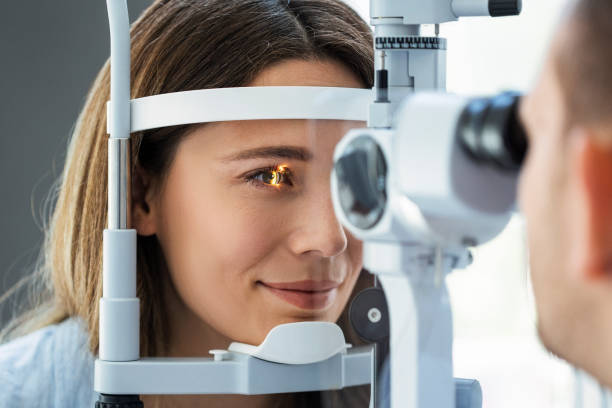Eye exams are the first step an eye doctor takes to determine the right prescription for your vision. These exams are comprehensive evaluations that go beyond simply checking whether you can see clearly. The process begins with a review of your medical history, as certain conditions like diabetes or high blood pressure can affect eye health. During the exam, the doctor will test your visual acuity, which measures how well you can see letters or symbols at different distances. They may also perform a refraction test, which uses lenses to determine the strength needed to correct your vision. Eye exams often include checks for eye coordination and depth perception, ensuring both eyes work properly together. Additional evaluations, such as measuring intraocular pressure, help detect issues like glaucoma. Through this thorough process, the doctor gathers information that leads to an accurate prescription.
How Does Refraction Help Determine Prescription?
Refraction is one of the most critical parts of the eye exam process. During this test, you look through a device called a phoropter while the doctor changes lenses and asks which option makes letters clearer. The goal is to pinpoint the exact lens strength that provides the sharpest vision. This step helps identify whether you are nearsighted, farsighted, or have astigmatism.
Each adjustment gives the doctor insight into how your eyes bend light and how lenses should correct it. The test is painless and usually completed within minutes, but its results are highly precise. Refraction is the foundation for prescribing glasses or contact lenses that best match your vision needs. Beyond refraction and visual acuity, eye exams may include additional tests to rule out underlying concerns. One common test is the slit-lamp exam, which allows the doctor to look at the structures of the eye under magnification. This can help detect cataracts, corneal issues, or retinal conditions.
The doctor may also perform a retinal exam, sometimes requiring dilated pupils, to evaluate the back of the eye. Intraocular pressure tests are often conducted to screen for glaucoma, a condition that can cause permanent vision loss if untreated. Other specialized tests may be used depending on age, health history, and symptoms. Each of these evaluations provides valuable insights that ensure your prescription is both safe and effective. Together, they confirm that your eyes are healthy while addressing your vision needs.
Why Are Regular Eye Exams Important?
Many people only think about seeing an eye doctor when their vision becomes blurry, but routine eye exams play a much larger role. They allow doctors to catch early signs of conditions that may not yet affect sight, such as glaucoma or macular degeneration. Regular exams also help track changes in your prescription, which can shift over time due to age, health conditions, or lifestyle factors. For children, eye exams are vital for identifying vision issues that may affect learning and development.
Adults benefit as well, since even small changes in vision can impact work performance and daily activities. Consistent exams reduce the risk of prolonged eye strain and headaches caused by outdated prescriptions. By maintaining a regular schedule, patients protect both vision and long-term eye health. This proactive approach ensures clearer sight and better overall quality of life.
Schedule Your Next Eye Exam
An eye doctor uses specialized tests and professional expertise to determine the right prescription for your needs. From refraction to retinal evaluations, the process is designed to deliver clarity and protect long-term eye health. Even if your vision seems fine, routine eye exams ensure early detection of potential problems. Whether you need glasses, contacts, or simply peace of mind, visiting your eye doctor is an investment in your well-being. Don’t wait until blurry vision disrupts your daily routine. Prioritize your eye health today by making an appointment for a comprehensive exam. Taking action now can safeguard your vision for years to come.









Leave a Reply